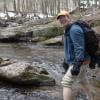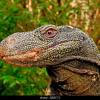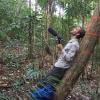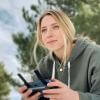AI Earth: Using AI to tackle Climate Change
27 November 2023 10:16am
Atos and WWF partner up to leverage technology to support biodiversity conservation
27 November 2023 9:32am
Atos & the WWF announced a 3-year strategic partnership to leverage technology to support biodiversity conservation & encourage businesses to decarbonize. 1 of the 4 main initiatives of the partnership is: Atos to develop responsible IT solutions for WWF & its partners.
Tenure Track Scientists (Sensing, Robotics, Machine Learning) - AOPE, WHOI
27 November 2023 9:21am
Freshwater and Community Conservation Remote Externship
27 November 2023 8:31am
Automatic and open-source radio-tracking
15 November 2023 10:03am
23 November 2023 4:58pm
Hi @tutgut5 @Rob_Appleby
their system has been used in a research project at the University of Marburg (LOEWE-Schwerpunkt Natur 4.0), its also been used in combination with Infra-red videos of bat movements (BatRack). We cooperated with them in 2021 for a small telemetry study, it worked well for us, here is their homepage
(although I'm not sure how up to date it is), if you have questions and would like some more info about their system there is an email address to contact them at.
All the best,
Sarah
24 November 2023 6:22am
Thanks for the information @Sarita , very helpful indeed!!
Cheers,
Rob
Enhancing Animal Welfare Through Data-Driven Insights
7 September 2023 7:32pm
8 September 2023 4:30pm
Sound really interesting and valuable Naomi. Looking forward to hearing more as the project continues.
Cheers,
Rob
23 November 2023 1:36pm
Hello Rob, I am hoping to have a follow-up soon on this, thanks for the boost!
Chat soon
Naomi
ICOTEQ launch TAGRANGER® system of products
23 November 2023 1:25pm
How to Choose a Biologger - Tracking Endangered Seabirds with Yvan Satgé
23 November 2023 12:10pm
AWMS Conference 2023
WWF Education for Nature 2024 Fellowships and Grants Info Session
21 November 2023 2:40pm
WWF's Education for Nature Fellowships and Grants are now open
21 November 2023 2:37pm
Eliminatha, WiCT 2023 Tanzania
21 November 2023 1:09pm
Passionate wildlife researcher and tech user, making strides in Grumeti, the heart of western Serengeti,Tanzania, using Camera Traps to gain priceless insights into the lives of this unique fauna and contributing greatly to understanding and preserving the Serengeti's ecosystems.
Firetail - Black Friday
New Tool from Defenders Connects Land Trusts with Management Tools and More | Defenders of Wildlife
20 November 2023 10:55am
Defenders unveiled WALT: Wildlife & Land Trusts, an interactive tool empowering land trusts to conserve more land by making accessible the necessary information for funding & technical assistance.
setting up a network of cameras connected to a server via WIFI
3 April 2022 7:19am
9 July 2022 6:03am
Great discussion! Pet (and other 'home') cams are an interesting option as @antonab mentioned. I've been testing one at home that physically tracks moving objects (and does a pretty good job of it), connects to my home network and can be live previewed, all for AUD69 (I bought it on special. Normal retail is AUD80):
On the Wifi front, and a bit of a tangent, has anyone done any work using 'HaLow' (see below for example) as it seems like an interesting way to extend Wifi networks?
17 July 2022 8:21am
Cool thread!
I will be testing Reolink Wi-Fi cameras in combination with solar powered TP-Link long range Wi-Fi antennas/repeaters later this field season for monitoring arctic fox dens at our remote off grid site in Greenland. The long range Wi-Fi antennas are rather power hungry but with sufficient solar panel and battery capacity I am hopeful it will work.
I am looking forward to explore the links and hints above after the field season.
Cheers,
20 November 2023 9:39am
Thank you for the links, Robin.
Alternative to Reconyx Ultrafire
8 November 2023 9:07am
18 November 2023 8:22pm
The two cameras you mention below tick off most of the items in your requirements list. I think the exception is the “timed start” whereby the camera would “wake up” to arm itself after a certain date. Camlockbox.com provides security boxes for both.
Especially if a white flash is useful in your research, you may also want to consider the GardePro T5WF. I don’t have a lot of long-term experience with this camera, but it is one of the few that offers a white flash, and it has excellent battery life, especially for night captures. The audio can be a little flaky
I have done posts on these cameras, including a teardown. See:
https://winterberrywildlife.ouroneacrefarm.com/2022/04/10/browning-spec-ops-elite-hp5-teardown/
https://winterberrywildlife.ouroneacrefarm.com/2022/09/26/inside-the-bushnell-core-ds-4k-trail-camera/
https://winterberrywildlife.ouroneacrefarm.com/2023/11/18/gardepro-t5wf-white-flash-trail-camera/
I have heard reports that the HP5 can let in moisture in very wet environments. This may be a direct water contact type of thing, as we have never had water issues with this camera when it is installed in a lock box (US Northeast, Northwest).
We prefer the HP5 due to superior image and audio quality. That said, there is a known issue that with some HP5 cameras, with some fast (> 80 MB/s rated read) and large SD cards, the SD card can become corrupted, preventing the camera from capturing images. I address this, including a fix via firmware, in another post:
https://winterberrywildlife.ouroneacrefarm.com/2023/11/16/fixing-browning-edge-elite-hp4-and-hp5-sd-card-corruption/
Hope this helps.
-bob
New book: Sound Identification of Terrestrial mammals
17 November 2023 1:55pm
Animove 2024
17 November 2023 10:47am
Ideas for easy/fast maintenance of arboreal camera traps
30 August 2023 8:51pm
15 November 2023 9:04pm
I use the same wifi trick with Reolink solar cameras looking at tree cavities (Austrian mountain forest). You can even put the mobile router on drone to get connection to the cameras.
16 November 2023 10:29pm
Yup Reolink is awesome! I've had a few cameras die on me, but hopefully I can get them repaired.
17 November 2023 9:19am
Hi Ben,
I would be interested to see if the Instant Detect 2.0 camera system might be useful for this.
The cameras can transmit thumbnails of the captured images using LoRa radio to a Base Station. You could then see all the captured images at this Base Station, as well as the camera's battery and memory information (device health). In addition, you could also change camera settings from the Base Station so you would not need to reclimb the trees to change from PIR sensitivity high to medium for instance.
The Instant Detect 2.0 cameras also have an external power port so a cable could be run to the ground to a DC 12V battery for long term power.
If you wanted to, you could also connect the Base Station to the Cloud using satellite connectivity, so that you can monitor the whole system remotely, but this will incur more cost and power usage of the Base Station.
I'd be keen to hear your thoughts,
Thanks,
Sam
Flying with li-ion batteries
15 November 2023 8:24pm
16 November 2023 2:26am
The 18650s should be packed in discrete holders to separate them and prevent them from shorting. I've taken up to 50 on a plane before. 100 might be a tall ask since most planes have limitations on total Amp Hours you can bring.
Good luck.
16 November 2023 4:01pm
Thanks Akiba, good to know you had no problems with those, and those cases look good. Having read a bit more, it actually seems that in theory there is no limit to the number of batteries you can bring, as long as each is <100Wh. Seems like I'll be testing that theory...
Instant Detect 2.0 and related cost
16 November 2023 12:50am
16 November 2023 10:55am
Hi Kaarthika, hi all,
ZSL's Instant Detect 2.0 is currently undergoing Beta testing with external partners and so is still pre-production. We therefore do not have final pricing for the system.
Saying this, we have got a manufacturing partner fully set-up who has already completed two full build rounds of the system, one in 2020 and another in 2023. This means we actually have a very good idea of the system's build costs and what these are likely to be when we can manufacture the system in volume.
While I cannot release this pricing yet, I am confident that we will have an unparalleled proposition.
In particular, the satellite airtime package we can supply to conservationists due to the generosity of the Iridium Satellite Company means that each system can send 3,600 (25-50KB) images a month from anywhere in the world for a single fixed fee. This equates to around a 97% discount to the normal commercial rates.
We are currently very busy fundraising so that we can make this final step to scale the system.
If we can secure this funding, we hope to go into volume production by mid-2024.
Best wishes,
Sam
16 November 2023 2:12pm
Thank You for your valuable update Sam
16 November 2023 2:30pm
Hello Sam,
What would you say would be the estimate cost was for the first version Instant Detect 1.0 ? That might help my research ?
PhD Opportunity - Marine Bioacoustics and Behaviour Lab
16 November 2023 2:13pm
Research/Field Technician - SPEC Lab Ocelot Research Program
16 November 2023 1:58pm
Catch up with The Variety Hour: November 2023
16 November 2023 12:59pm
PhD Opportunity - Real-time acoustic monitoring of insect pollinators and their behaviours
16 November 2023 12:48pm
How to Choose a Biologger - Tracking Elephants with Neus Estela Ribera
16 November 2023 12:01pm
How to Choose a Biologger - Where do I start?
16 November 2023 12:00pm
Have your say: Take the 2023 WILDLABS State of Conservation Technology Survey
15 November 2023 9:20am
The State of Conservation Technology 2023: Five Key Findings
15 November 2023 9:20am
























20 November 2023 10:39am
Thanks for the information, I'm going to have a look and will keep you updated if I got any news.